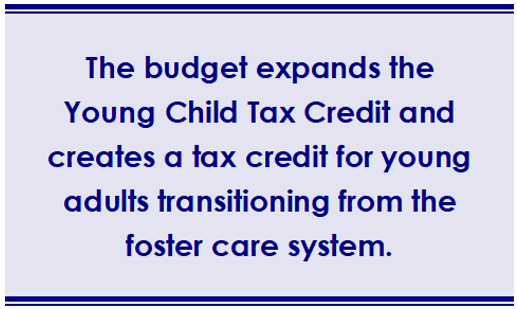You can also view this newsletter as a PDF.

Controller Yee and California Leaders Work
to Stem Impacts of Roe v. Wade Reversal
On June 24, the U.S. Supreme Court — in its ruling in the case of Dobbs v. Jackson Women's Health Organization — overturned Roe v. Wade, which had protected the right to reproductive health care since 1973.
While abortion care remains legal and accessible in California, 15 states have some form of “trigger ban” in place – state laws prohibiting abortion that kick in when abortion no longer is federally protected. Pro-choice Americans decried the decision. State Controller Yee, who serves as chief fiscal officer for the world’s fifth-largest economy, said:
“Nobody, man or woman, should breathe a sigh of relief today because they have the geographic fortune to live in a ‘blue’ state. The ramifications of today’s misguided Supreme Court decision will be widespread and painful, setting us back even further at a time when women’s work already was curtailed by caregiving during the COVID-19 pandemic.
Throughout history, societies that respected women’s autonomy have thrived economically, while those that did not trailed behind. In the U.S., access to birth control and abortion led to fewer teen pregnancies, more women obtaining higher education, and the share of the workforce that is female rising from approximately one-third to nearly half. It has been proven that women who work put a significantly larger share of their income back into communities. These charitable efforts will be reduced even as this decision heightens their importance.
I am proud that California will put itself forward as a safe haven for women in need of reproductive health care — and make no mistake, abortion is HEALTH CARE — but work leave and travel for such care will remain out of reach for the poorest of women hardest hit by this ruling. No person’s humanity should be determined by geographic boundaries or regional biases. I stand with all who are outraged at this undermining of long-established precedent.”
According to UN Women, women’s economic empowerment is central to achieving the 2030 Sustainable Development Goals. Such empowerment must include the ability to fully participate in the economy, and control over one’s own time, life, and body.
UN Women also cites education and upskilling over the course of life as being critical to the health and well-being of women and girls. When abortion was legalized by Roe v. Wade, the Institute for Women’s Policy Research reports teen pregnancy rates decreased, and high school graduation rates and college admission for women increased as did labor market participation. These results were most pronounced among women of color. Further, children born to women with access to abortion were less likely to experience poverty.
By a vote of 324-155, the European Union’s parliament condemned the U.S. for ending constitutional protections for reproductive health care, leading to a push to enshrine abortion rights in the EU’s fundamental rights charter.
In the immediate aftermath of the SCOTUS ruling, California Legislative Women’s Caucus announced a package of legislation to codify protections for reproductive health care in California.
Controller Yee has thrown her unequivocal support behind the measures. In her letter expressing support for the legislation, Controller Yee applauded the LWC for “striving to ensure women everywhere have equitable access to quality, legal reproductive health care.”
Within days, the legislature had passed Senate Constitutional Amendment 10 (Atkins), placing a measure on the November ballot to enshrine the right to abortion and contraceptives in the California Constitution.
Other bills in the 2022 LWC Reproductive Justice Policy Priority Package include measures to:
- Protect patients and providers in California from civil action or financial retaliation for providing or receiving legal abortion care;
- Protect the medical privacy of people who travel to California from out of state for reproductive health care;
- Increase access to and affordability of reproductive health care, including through grants to safety net abortion providers treating those without health coverage or the ability to pay; and
- Create a California Reproductive Health Services Corps to recruit, train, and retain reproductive health care professionals to work in underserved areas.
 In the wake of SCOTUS’ reversal of Roe v. Wade, Rhia Ventures reissued its 2020 report, “Hidden Value: the Business Case for Reproductive Health.” Rhia’s research shows corporations providing insurance for contraception and abortion ultimately save money through lower employee turnover and better health outcomes. The report encourages investors to take the following steps to ensure reproductive health coverage is offered by the companies in their portfolios:
In the wake of SCOTUS’ reversal of Roe v. Wade, Rhia Ventures reissued its 2020 report, “Hidden Value: the Business Case for Reproductive Health.” Rhia’s research shows corporations providing insurance for contraception and abortion ultimately save money through lower employee turnover and better health outcomes. The report encourages investors to take the following steps to ensure reproductive health coverage is offered by the companies in their portfolios:
- Engage with portfolio companies about reproductive health. Seek to understand their approach as providers of insurance and benefits and discuss challenges and opportunities in public policy and political spending.
- Encourage companies to become more transparent about their reproductive health care benefits, to strengthen their policies, and to adopt risk mitigation measures.
- Encourage firms that research environmental, social, and governance (ESG) factors at corporation to track and benchmark corporate policies and behavior in the area of reproductive health benefits.
- Incorporate corporate performance in this area into ESG evaluation of companies.
- Collaborate with other investors to promote greater corporate awareness and responsibility on reproductive health issues to company management and boards.
- Vote proxies in support of shareholder proposals seeking greater transparency and responsibilities in this area.
As a fiduciary of the nation’s two largest public pension funds—the California Public Employees’ Retirement System and California State Teachers’ Retirement System—Controller Yee hopes to see investors elevate reproductive health care in their engagement efforts, just as they have with diversity and inclusion and climate resiliency.
California Budget Includes Record Spending and Record Reserves
California’s state budget for Fiscal Year 2022-23 (Assembly Bill 178) was enacted on June 30, 2022. This budget bill represents a compromise between the Legislature and the Administration on the original budget bill (Senate Bill 154) approved by the Legislature prior to the June 15 constitutional deadline. The FY 2022-23 Budget Act includes total spending of just over $300 billion, of which $224.4 billion is from the General Fund. Controller Yee rates the following as highlights of the FY 2022-23 Budget Act.
Record High Reserves
The budget includes total reserves of $37.1 billion, including $3.4 billion for the Special Fund for Economic Uncertainties; $900 million for the Safety Net Reserve; $9.5 billion for the Proposition 98 Reserve; and $23.3 billion for the Rainy Day Fund, or Budget Stabilization Account.
State Appropriations Limit
The Budget Act reflects proposals of the Legislature and Governor that keep the state well under the State Appropriations (Gann) Limit for the two-year period that ended June 30, 2022, and for FY 2022-23.
Direct Financial Relief
The Budget Act provides $9.5 billion in direct tax refunds to 17.5 million Californians in three tiers:
- 14.2 million tax filers with incomes up to $75,000 for an individual and up to $150,000 for joint filers;
- 2.1 million tax filers with incomes above tier one but below $125,000 for an individual and below $250,000 for joint filers; and
- 1.1 million tax filers with incomes above tier two but below $250,000 for an individual and below $500,000 for joint filers.
 Additional Assistance for Vulnerable Californians
Additional Assistance for Vulnerable Californians
The FY 2022-23 Budget Act provides additional relief to vulnerable Californians enrolled in the Supplemental Security Income/State Supplemental Program (SSI/SSP) or CalWORKs program, as well as foster youth. It also provides relief from unpaid utility bills:
- SSI/SSP—Accelerates half of the grant increase planned for January 1, 2024, to January 1, 2023. This will increase grants by about $39 per month ($470 a year) for individuals and $100 per month ($1,200 a year) for couples.
- CalWORKs—Increases CalWORKs grants for two years by an additional 10 percent on top of the 11-percent increase included in the May Revision. Combined, these increase the grant for a family of three by as much as $194 per month.
- Utility Assistance—Provides $1.4 billion for assistance to active utility customers with past-due electric and water utility bills incurred during the COVID-19 pandemic bill relief period.
- Young Child Tax Credit—Allocates $95 million to expand the Young Child Tax Credit to zero-income filers and to create a Foster Youth Tax Credit of $1,000 for young adults transitioning from the foster care system.
Relief for Business and Nonprofits
California’s state budget provides $2.3 billion in fiscal relief to small businesses and nonprofit organizations:
- Unemployment Insurance Cost Relief—$1.5 billion for unemployment insurance cost relief, including $1 billion to begin paying down the state’s federal loan, and $500 million as early as FY 2024-25 to provide rebates to small businesses to reimburse them for increased costs.
- Diesel Sales Tax Relief—$439 million to suspend the General Fund portion of the sales tax on diesel fuel, reducing costs by about 23 cents per gallon.
- Paid Sick Leave Relief—$250 million for grants for small businesses and nonprofit organizations with up to 150 employees to offset costs of the recently enacted Supplemental Paid Sick Leave program.
- Small Agriculture Drought Relief Grants—$75 million for the California Small Agricultural Business Drought Relief Grant Program.
Homelessness Crisis
The FY 2022-23 Budget Act allocates an additional $1 billion for the Homeless Housing, Accountability, and Prevention Program in 2023-24, bringing the total to $2 billion over the next two years. A trailer bill (AB 180) amends the 2021 Budget Act to provide an additional $150 million for Project Homekey in FY 2021-22. The newly enacted budget also includes $700 million over two years for the Encampment Resolution Funding Program, reserving up to 50 percent of funds for local projects that address encampments on state right-of-ways.
Affordable Housing, Homeownership, and Eviction Legal Aid
The FY 2022-23 Budget Act includes $500 million to establish the California Dream for All program to provide assistance for an estimated 4,000 first-time homebuyers. Of this amount, $250 million is allocated to the Department of Housing and Community Development (HCD) for its affordable homeownership program, CalHome, in FY 2022-23, with another $100 million for FY 2023-24; and $250 million is directed to the HCD Housing Accelerator Program, which closes funding gaps to advance affordable renting housing projects reliant on tax credit funding.
The budget also directs $200 million to the HCD Infill Infrastructure Grant Program in FY 2022-23, with a $34 million set-aside for small/rural jurisdictions. Another $30 million is included to increase funding for eviction protection legal aid services.
Climate, Energy, and Resiliency
California’s newly enacted state budget commits $19 billion from the General Fund (in addition to associated federal and special funds) over multiple years to needed climate and energy investments:
- Addressing Drought and Water Resilience—Invests $2.8 billion for near- and long-term actions to build water resilience, promote conservation, and more.
- Fighting Wildfires—Provides $2.7 billion to reduce the risk of catastrophic wildfires and bolster forest health. Projects include forest thinning, prescribed burns, grazing, reforestation, and fuel breaks.
- Accelerating the Zero-Emission Vehicle Transition—Invests an additional $6.1 billion to create a total $10 billion package to expand zero-emission vehicle access and affordability and support the build-out of infrastructure across the state.
- Bolstering our Energy System—Allocates $4.3 billion to support energy reliability, provide relief to ratepayers, create strategic energy reserves, and accelerate clean-energy projects. An additional $3.8 billion is allocated for clean-energy projects to boost affordability and reliability.
The FY 2022-23 Budget Act also directs $14.8 billion to regional transit, rail, and port projects to support the continued development of clean transportation projects, including California’s first-in-the-nation high-speed rail system and bicycle and pedestrian projects.
Teacher and State Employee Retirement
Budget trailer bills included a $2.9 billion supplemental payment to further reduce the state’s unfunded liability for the California State Employees’ Retirement System, as well as $3.7 billion from the General Fund for the state’s required FY 2022-23 contribution to the State Teachers’ Retirement System.
Other Notable Investments
Reproductive Rights: The Budget Act provides more than $200 million in key investments to help California continue to lead in protecting access to reproductive health care, including:
- $40 million for the Uncompensated Care Fund
- $30 million for equity and infrastructure payments for clinic abortion providers
- $20 million for reproductive health services scholarships/loan repayments
- $20 million for reproductive health care facilities security
- $20 million for premium subsidy payments
Care Court: The budget includes $64.7 million for the Community Assistance, Recovery, and Empowerment (CARE) Court proposal to fund state department and judicial branch costs for the new program, contingent on adoption of statutory changes codifying the program. CARE Court provides people with untreated mental illness with a care plan that includes supportive services, medication, and a housing plan. Significant CARE Court policy provisions remain unresolved, such as a deliberative phase-in schedule for counties, sanctions, and housing access and availability for participants.
Medi-Cal for All: The budget expands eligibility for full-scope Medi-Cal coverage to income-eligible individuals age 26 to 49, regardless of immigration status. Currently, income-eligible adults 25 and younger and those 50 years and older have access to full scope Medi-Cal. The estimated cost is $834 million ($625 million General Fund) for half of FY 2023-24 and $2.6 billion ($2.1 billion General Fund) annually at full implementation. Coverage is to begin no later than January 1, 2024.
 Cannabis Tax Reform: The cannabis trailer bill eliminates the cultivation tax beginning January 1, 2023, caps the excise tax at 15 percent of gross receipts for three years, and shifts collection from distributors to retailers.
Cannabis Tax Reform: The cannabis trailer bill eliminates the cultivation tax beginning January 1, 2023, caps the excise tax at 15 percent of gross receipts for three years, and shifts collection from distributors to retailers.
Coastal Protection and Sea-Level Rise: The budget allocates $80 million from the Greenhouse Gas Reduction Fund for the State Coastal Conservancy in support of the Climate Ready Program for nature-based projects to address sea-level rise.
As California navigates uncertain economic times, it is not clear whether the financial assumptions used to create a budget with a historic level of spending will hold true. Controller Yee and her team will maintain their watch over state revenues as inflation continues to affect global markets.
One thing has held true over time—the majority of any downside risk is borne by California’s most vulnerable individuals. During times of recession and deficits, budget reductions largely are targeted at critical public assistance programs. Such budget-trimming tactics can result in the elimination of a program or service, or reducing a program’s funding to the federal minimum requirement.
Budget deficits also lend themselves to other desperate actions that further unsettle the state’s financial condition and resiliency. During the Great Recession, questionable budget actions such as using accrual accounting gimmicks, draining reserve accounts, borrowing from special funds, and delaying or reducing mandatory payments (especially to local governments) greatly weakened California’s financial condition. Unsurprisingly, these actions also led to a reduction in the state’s credit rating, increasing the state cost to borrow and creating a greater strain on the General Fund. To date, state leaders have successfully heeded the Great Recession’s cautionary tale.